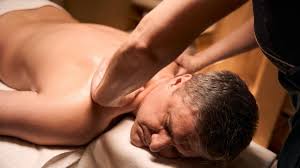Massage therapy has been a part of human culture for thousands of years, with roots tracing back to ancient civilizations such as Egypt, China, and Greece. Over time, it has evolved into a recognized and respected form of complementary tantric massage, used to promote physical and mental well-being. In this article, we will explore the various benefits of massage, the different types of massage techniques, and how to incorporate massage into your wellness routine.
Understanding Massage Therapy
At its core, massage therapy involves the manipulation of the body’s soft tissues to promote relaxation, relieve tension, and improve overall health. Massage can involve a variety of techniques, including kneading, pressing, and stroking, applied to muscles, tendons, ligaments, and fascia.
Benefits of Massage
- Stress Reduction
One of the most significant benefits of massage therapy is its ability to reduce stress. The calming nature of massage promotes the release of endorphins, the body’s natural feel-good hormones, which help alleviate feelings of anxiety and depression. Regular massage sessions can lead to improved mood and a greater sense of well-being. - Pain Relief
Many individuals seek massage therapy as a natural way to relieve pain. Whether it’s chronic pain from conditions like arthritis, fibromyalgia, or lower back pain, massage can help alleviate discomfort by increasing blood flow, reducing inflammation, and promoting relaxation. Massage can also be beneficial for athletes or those recovering from injuries, helping to ease muscle tension and soreness. - Improved Circulation
Massage therapy enhances blood circulation, allowing for better oxygen and nutrient delivery to tissues. Improved circulation can promote faster healing and recovery from injuries, as well as boost overall energy levels. This can be particularly beneficial for individuals with poor circulation or those who lead sedentary lifestyles. - Enhanced Flexibility and Range of Motion
Regular massage therapy can help improve flexibility and increase the range of motion in joints. This is especially important for athletes or individuals who engage in physical activity. Stretching and manipulation of muscles during massage can help release tightness and promote greater mobility. - Better Sleep Quality
Many people struggle with sleep disorders or poor sleep quality. Massage therapy can help improve sleep patterns by promoting relaxation and reducing stress and anxiety. Regular sessions may lead to deeper and more restorative sleep, helping individuals feel more refreshed and energized. - Boosted Immune Function
Research has shown that massage therapy can enhance immune function by increasing the activity of natural killer cells and boosting overall immune response. This can be particularly beneficial during cold and flu seasons or for individuals with compromised immune systems.
Types of Massage Techniques
There are various massage techniques, each with its unique benefits. Some popular types include:
- Swedish Massage: A gentle form of massage that uses long strokes, kneading, and circular movements to promote relaxation and reduce tension.
- Deep Tissue Massage: This technique focuses on the deeper layers of muscle and connective tissue, making it effective for chronic pain and tension relief.
- Sports Massage: Designed for athletes, this type of massage helps prevent and treat injuries, improve performance, and enhance recovery.
- Hot Stone Massage: Heated stones are placed on specific points of the body to promote relaxation and ease muscle tension.
- Aromatherapy Massage: This technique combines essential oils with massage to enhance relaxation and improve emotional well-being.
Incorporating Massage into Your Wellness Routine
To fully reap the benefits of massage therapy, consider incorporating it into your regular wellness routine. Here are a few tips:
- Schedule Regular Sessions: Aim for at least one massage session per month, or more frequently if you’re dealing with chronic pain or high stress levels.
- Choose a Qualified Therapist: Look for a licensed and experienced massage therapist who specializes in the type of massage you’re interested in.
- Communicate Your Needs: Before your session, communicate any areas of tension or discomfort to your therapist to ensure they tailor the massage to your specific needs.
- Combine with Other Wellness Practices: Consider pairing massage therapy with other wellness practices, such as yoga, meditation, or a healthy diet, to enhance overall well-being.
Conclusion
Massage therapy is a powerful tool for promoting relaxation, healing, and overall health. Whether you’re seeking relief from stress, pain, or tension, incorporating regular massage into your wellness routine can lead to significant improvements in both physical and mental well-being. So, take the time to invest in yourself—schedule that massage and experience the many benefits it has to offer.
